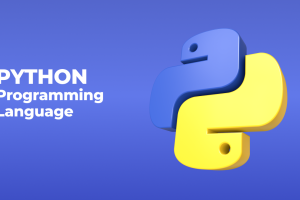
Frontend vs Backend: Which One Should I Choose?
Are you a web developer looking to specialize in either frontend or backend development? It’s an important decision to make, as both roles have their own unique challenges and opportunities. In this article, we’ll explore the differences between frontend and backend development, helping you make an informed choice that aligns with your skills and career goals.
Introduction
In the world of web development, frontend and backend are two distinct areas that work together to create a fully functional and visually appealing website or application. Frontend development focuses on the user interface and user experience, while backend development handles the behind-the-scenes logic and data management. Let’s delve deeper into each domain to understand their roles and responsibilities.
Frontend Development: Creating the User Experience
Frontend development is all about bringing a website or application to life through a visually compelling and intuitive user interface. It involves writing code in programming languages like HTML, CSS, and JavaScript to build the frontend of a website that users can interact with.
As a frontend developer, you’ll be responsible for:
- Design Implementation: Translating the design mockups provided by the UI/UX designers into functional web pages. This includes creating the layout, styling elements, and adding interactivity using JavaScript.
- Responsive Design: Ensuring that the website is accessible and usable across different devices and screen sizes. This involves making the design responsive and optimizing it for mobile devices.
- Cross-Browser Compatibility: Making sure that the website works well on different web browsers by writing code that is compatible with various browser standards.
- Performance Optimization: Optimizing the frontend code and assets (such as images, scripts, and stylesheets) to improve the website’s loading speed and overall performance.
Backend Development: Powering the Website’s Functionality
While frontend development focuses on the user interface, backend development handles everything that happens behind the scenes. It involves building the server-side logic, database management, and APIs that enable the frontend to interact with the server.
As a backend developer, your responsibilities include:
- Server-Side Programming: Writing code in programming languages like Ruby, Python, PHP, or Java to create the backend logic that handles requests from the frontend and processes data.
- Database Management: Designing and managing the database structure to store and retrieve data efficiently. This includes creating tables, defining relationships, and optimizing queries for better performance.
- API Development and Integration: Building APIs (Application Programming Interfaces) that allow different systems to communicate with each other. This includes integrating third-party services and ensuring smooth data transfer.
- Security and Scalability: Implementing security measures to protect the website or application from potential threats. Ensuring that the backend is scalable to handle increasing traffic and demands.
Which One Should You Choose?
Now that we have a clear understanding of the roles and responsibilities of frontend and backend developers, it’s time to decide which path to choose. Here are some factors to consider:
- Your Skillset and Interests: Evaluate your strengths and interests. If you enjoy visual design, working with user interfaces, and have a knack for creating intuitive user experiences, frontend development might be a great fit for you. On the other hand, if you excel in problem-solving, logical thinking, and enjoy working with databases and server-side programming, backend development could be a better choice.
- Job Market and Opportunities: Research the job market in your area or desired location to understand the demand for frontend and backend developers. While both roles are in high demand, the market dynamics may vary depending on geographical location, industry, and technology trends.
- Collaboration and Team Dynamics: Consider the type of projects you want to work on and the size of the development team you prefer. Frontend development often involves close collaboration with designers, while backend development may require working closely with other backend developers, database administrators, and DevOps teams.
Conclusion
Now that you have a better understanding of frontend and backend development, it’s time to make a decision based on your skills, interests, and career goals. Remember, both frontend and backend development play crucial roles in creating a successful web application or website. If you’re still unsure, you can also explore full-stack development, which involves working on both frontend and backend technologies.
Choose the path that excites you and aligns with your strengths, and remember that in the ever-evolving world of technology, continuous learning and staying updated with the latest industry trends is key to success.



